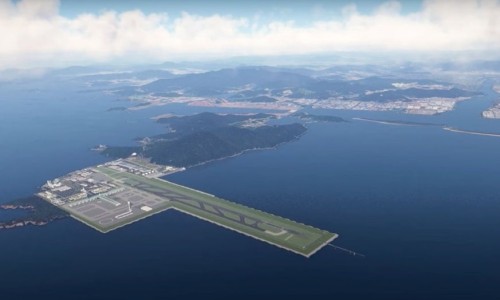Table of Contents
- Access railway on the right track, key is the submarine tunnel
- PQ → Design review → Granting of suitable candidate status
- Core of the 1st section: 8.5km long with 8.31km being tunnel; 1km underwater is critical for TBM
- Competition for the 2nd section: 'Lowering of entry barriers' through separated bidding, inter-process linking is variable
- Challenges: Soil treatment, interlinking processes, price evaluation, and schedule reliability
- Conclusion·Summary
- Frequently Asked Questions (FAQ)
Access railway on the right track, key is the submarine tunnel
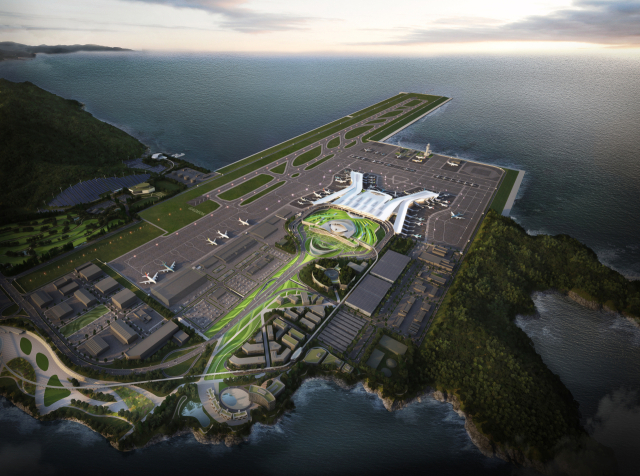
The Gadeokdo New Airport access railway has made progress by being selected as a suitable candidate in the 1st section.
In the 2nd section, a consortium of Sunkyong Construction and Geumdong Construction is competing, and a technology and price review will be held soon.
This selection marks an important milestone aimed at a planned opening in 2031, with subsequent tasks including price evaluation, contract signing, and advanced design remaining major challenges.
Recommended articles to read alongside the Gadeokdo New Airport
PQ → Design review → Granting of suitable candidate status

At the end of PQ in January this year, the Lotte Construction and Hanshin Construction consortium participated in the 1st section, creating a competitive landscape. However, the 2nd section faced a lack of initial bids, making a re-announcement unavoidable. Subsequently, the bidding agency separated the trackbed and signal systems, adjusting the bidding requirements, and in the April re-announcement, the consortium of Sunkyong Construction and Geumdong Construction participated in the competition.
In July, entering the design review stage, the industry forecasted that "submarine tunnel technology is a key variable." In August, the National Railroad Corporation selected the Lotte Construction consortium as the suitable candidate for the detailed design of the 1st section, scoring 96.55 in the comprehensive evaluation, surpassing the Hanshin Construction consortium. Now, the only remaining step is price evaluation, and it is noteworthy that 13 out of 15 review committee members gave high scores.
This situation is expected to have a significant impact on the project's performance in the future.
Core of the 1st section: 8.5km long with 8.31km being tunnel; 1km underwater is critical for TBM
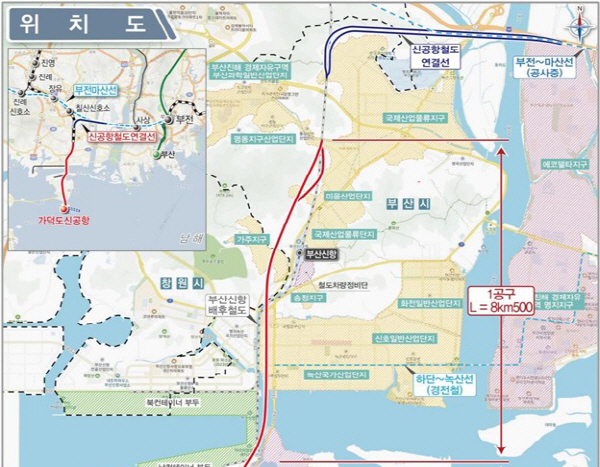
The total length of the access railway to Gadeokdo New Airport is 16.5km. The first section is 8.5km long, with an estimated cost of approximately 679.6 billion won. It mainly consists of a tunnel and includes a vehicle base. The approximately 1km underwater section is planned to use TBM methods to ensure watertightness and structural stability. The remaining mountainous and underground sections will primarily use NATM methods. Therefore, the processes, quality, and risk management capabilities of the TBM method are critically important to the success of the project.
In the design review process, various areas including railway planning, soil quality, structure, construction, and vehicle bases are evaluated. In particular, the appropriate application of terrain and ground modeling based on smart construction technology and BIM significantly influenced the evaluation scores. This means that reducing risks based on data before construction and designing a maintenance system is essential.
Competition for the 2nd section: 'Lowering of entry barriers' through separated bidding, inter-process linking is variable
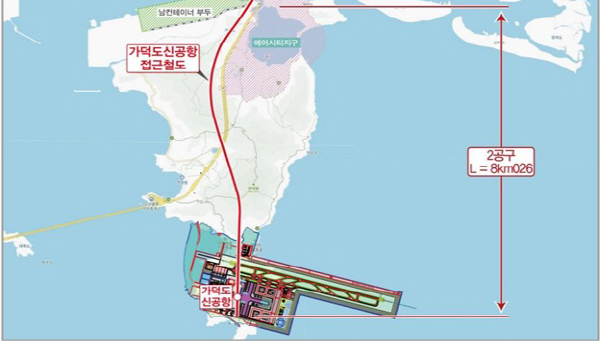
The 2nd section has a total length of about 8.0km, of which 7.8km is tunnel section and includes one new airport station. Following the recent re-announcement, it is proceeding with a dual structure of a consortium consisting of Sunkyong Construction and Geumdong Construction.
Initially, the burden was high due to ‘combined bidding for power, signaling, and communication,’ but by separating the trackbed and systems work, competition became viable. A review for detailed design qualification is soon to take place, and the connectivity between processes and methods with the 1st section is becoming a significant point of observation.
Challenges: Soil treatment, interlinking processes, price evaluation, and schedule reliability

As all sections are underground and underwater, the treatment of spoil generated during excavation and the verification of the ground and waterproofing design in the underwater sections have emerged as major risk factors. The industry continually emphasizes that a system to properly handle and transport large amounts of spoil, and coordinating inter-project linkages are essential.
If the price evaluation is passed, the 1st section is expected to proceed immediately with tasks such as advanced design, procurement, TBM manufacturing, and transport. Due to its long extension of 16.5km and the specifics of underwater excavation, the accuracy of the initial design is anticipated to significantly impact the reliability of the overall schedule. These factors will be significant variables in future progress.
Conclusion·Summary
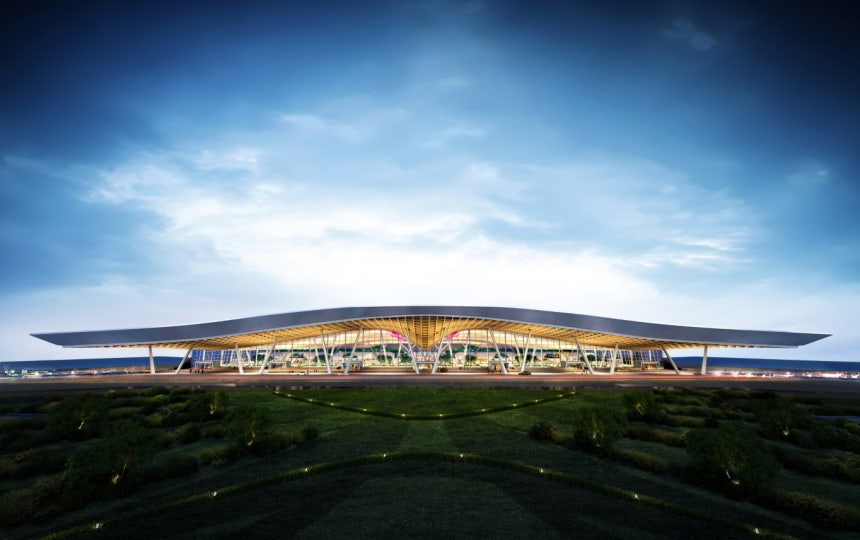
The Gadeokdo New Airport access railway 1st section has officially begun progress with the selection of the Lotte Construction consortium as the suitable candidate. In contrast, a competitive landscape is forming between Sunkyong Construction and Geumdong Construction for the 2nd section.
The success of this project depends on the use of TBM (Tunnel Boring Machine) for the 1km underwater section and risk management through BIM and smart construction. Furthermore, factors such as soil treatment, interlinking processes, and price evaluation are expected to be variables going forward. The sophistication of technology and process management will be crucial in ensuring schedule and quality.
#GadeokdoNewAirport, #AccessRailway, #GadeokdoNewAirportAccessRailway, #1stSection, #LotteConstruction, #HanshinConstruction, #2ndSection, #SunkyongConstruction, #GeumdongConstruction, #NationalRailroadCorporation, #BusanNewPort, #SubmarineTunnel, #TBM, #NATM, #BIM, #SmartConstruction, #VehicleBase, #NewAirportStation, #RailwayConstruction, #TurnkeyBidding, #PQReview, #DesignReview, #SelectionOfSuitableCandidates, #BusanTransportation, #GyeongnamTransportation, #AirportRailway, #SOCProject, #InfrastructureDevelopment, #2031Opening, #BusanNews
Frequently Asked Questions (FAQ)
Q. Who is the suitable candidate for the Gadeokdo New Airport access railway 1st section?
The 1st section has been selected as a suitable candidate by the Lotte Construction consortium.
In August 2023, the National Railroad Corporation selected the Lotte Construction consortium as the suitable candidate for the detailed design of the Gadeokdo New Airport access railway 1st section. It scored 96.55 in the comprehensive evaluation, overtaking the competing Hanshin Construction consortium, with 13 out of 15 review committee members assigning high scores. This marks a significant milestone indicating the official progress of the project.
Q. How is the submarine tunnel method applied in the Gadeokdo access railway 1st section?
The TBM method is applied in the 1km underwater section, while NATM is used in the rest.
Of the total length of 8.5km in the 1st section, approximately 1km of the underwater section is planned to use Tunnel Boring Machine (TBM) methods to secure watertightness and structural stability. The existing NATM method will predominantly be used in the other mountainous and underground sections, highlighting the processes, quality, and risk management of the TBM method as key factors for the success of the project.
Q. How is the bidding for the 2nd section proceeding?
The 2nd section has formed a competitive landscape through separated bidding, with Sunkyong Construction and Geumdong Construction currently competing.
Initially, there were no bids for the 2nd section, making a re-announcement unavoidable, but by separating the trackbed and signal systems into individual bids, the entry barriers were lowered. Currently, a bid is ongoing with a consortium of Sunkyong Construction and Geumdong Construction, and a review for detailed design qualification is scheduled soon. The connections between processes with the 1st section are becoming a significant variable.
Q. What are the major risks and challenges of this project?
Spoil handling, interlinking processes, price evaluation, and schedule reliability are the main challenges.
Since the entire access railway will be constructed as underground and submarine tunnel structures, spoil handling that occurs during excavation poses a significant issue. Moreover, coordinating inter-process linkages and successfully passing the price evaluation, as well as ensuring schedule reliability based on design accuracy, are crucial challenges in advancing the project. These factors are expected to significantly impact the quality of construction and schedule.
Q. What are the important technical elements for the success of the project?
Utilization of TBM methods and smart construction technologies based on BIM are key.
The application of the TBM method for the 1km underwater section is a technical cornerstone, while smart construction technologies and BIM (Building Information Modeling) play a vital role in risk management and maintenance planning through terrain and ground modeling. This advanced design and method application will critically influence the achievement of the 2031 opening goal.

